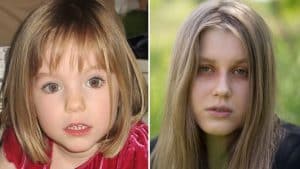Got it — you’ve pasted a long, mixed-format piece with headline-style opening, social media context, and a recap of the Madeleine McCann case.
If you’d like, I can condense it into a clear, readable article with a smooth narrative flow, while still keeping the essential details about Julia Wendell’s claims, public reaction, and the background of the McCann case.

Here’s a rewritten, tightened version:
“IT’S OVER!” – Portuguese Police Report New Development in Madeleine McCann Case Amid Woman’s Shocking Claim
A Polish woman, Julia Wendell, has drawn global attention after claiming she could be Madeleine McCann — the British girl who vanished from a Portuguese resort in 2007 at the age of three.
Wendell, 21, has shared a series of social media posts comparing her physical features with Madeleine’s, including a rare eye condition — coloboma — as well as similar moles, freckles, and a dimple. She also points to gaps in her childhood memories, uncertainty about her age, and a police sketch from the case that she says resembles her past abuser.

She alleges that her family has refused to help verify her identity, declining to provide a birth certificate or DNA samples. In response to her public plea, Wendell claims Kate and Gerry McCann have requested she undergo DNA testing — though neither the family nor London’s Metropolitan Police have confirmed this.
The online reaction has been divided, with some urging police to investigate her claims and others accusing her of seeking attention. Critics have noted she has used different surnames, including Faustyna, Wendell, and Wandelt.
The McCann Disappearance
On May 3, 2007, Madeleine disappeared from a hotel room in Praia da Luz, Portugal, while her parents dined nearby. The case sparked an international search involving Portuguese, British, and German authorities.
In 2020, German police identified Christian Brückner — a convicted rapist who lived in the area at the time — as a formal suspect, saying they had “new evidence” and believed Madeleine was dead. British police continue to treat the matter as a missing person case.
The investigation remains open, and the truth behind Wendell’s claim — and its potential connection to one of the world’s most infamous missing person cases — is yet to be determined.





